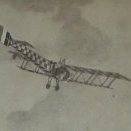-
Posts
916 -
Joined
-
Last visited
Profile Information
-
Gender
Male
-
Interests
Concertina, melodeon & accordion enthusiast and repairer. Retired from repairing recently after 30 odd years, but still do the odd fix for friends.
I play anglo and English, but not at the same time!
My style on both is akin to a frustrated duet player. (Also have a Crane aeola).
Happy to assist with concertina problems and give, hopefully, helpful advice. -
Location
Woolgoolga, NSW Australia
Recent Profile Visitors
4,188 profile views
malcolm clapp's Achievements

Heavyweight Boxer (5/6)
-
Haven't yet seen a dietitian. A bit hard to find in my neck of the woods. Google has plenty of suggestions, but probably a lot of misinformation too....
-
Not being one to cause unnecessary alarm, and with no professional medical knowledge, but does anyone who plays a metal ended concertina and finger/hand problem (myself included) considered the possibility of a nickel allergy? Apparently, an estimated 10% of the (human) population are susceptible to such an allergy, for which there is no cure. Avoiding objects and foods containing nickel are recommended, according to Dr Google. The early signs are not particularly troublesome and certainly not life-threatening, but the long term effect is failure of the body's auto-immune system, which is a bit more serious. Four years ago, I developed necrotising fasciitis in my left leg, which led to sepsis. Three months in hospital (2 months in ICU in an induced coma) was not a happy experience as you can imagine. Just recently, after a COVID scare and some investigation as to my auto-immune status (poor!), I was asked about exposure to nickel, sent to a dermatologist, and guess what? I'm one of the 10%. It was only then that the penny dropped and the 40 odd years of playing a metal ended (nickel plated) Jeffries on a regular basis might be the cause of my woes. Not much that can be done at my advanced years apart for some dietary changes to help boost my immunity, and avoidance of potential causes of infection, so just have to take a bit of extra care with tools, sharp instruments (no pun intended), insect bites, minor skin abrasions and especially COVID I guess. I doubt if I have anything to loose by continuing to play my Jeffries as the damage to my AIS is already done, and there is no absolute proof that the concertina is to blame, but is the strongest link that the medicos can come up with. Food for thought....
-
Great video and series. I wish I had just a small percentage of his workshop equipment....and his patience. If I had any criticism, it would be the proximity of his cup of tea to the workspace....but then again, he obviously has a very steady hand. 😃
-

FS: Wheatstone Aeola 56 key Tenor-Treble metal ended
malcolm clapp replied to SteveS's topic in Buy & Sell
Brings to mind the old song "When it's Night Time in Italy, it's Wednesday Over Here". -

Raised ends versus flat ends
malcolm clapp replied to Snedder's topic in General Concertina Discussion
Never really thought about it before. Probably all of the above, plus economics; flat ends would presumably be less expensive to produce. And don't forget domed ends, or is that just a sub-set of raised ends? -
I doubt that Ebor is a maker's or model name, at least I have never come across it, but all things are possible.... However, it is likely that Ebor refers to the Ebor Musical Museum, once located (strangely!) in the town of Ebor in New South Wales. I vaguely recall that it closed down many years ago; I never went there, and I don't know whether it was a bona fide museum, or just a glorified name for a music shop. Currently on eBay is a Mezon accordion in pretty poor condition with an Ebor Musical Museum sticker, and I have seen a number of other instruments similarly labelled over the years, including a couple of concertinas and a banjo, all in similarly neglected condition. I did ask the seller, just out of curiosity, if he could post a photo of the name inscription, but he did not respond.
-

Tuning piano accordion reeds for Anglo concertina
malcolm clapp replied to Fanie's topic in Instrument Construction & Repair
How often would you expect to need that troublesome high B? I have seen that high B/F# pairing substituted on many C/G anglos with F/F#, which would be so much easier to make from an F#/F# piano-accordion reed. -
Off-topic content (piano accordion advice) removed by request.
-

Help me demystify this old German-made Anglo in New Zealand
malcolm clapp replied to LolaBoots's topic in Concertina History
More fuel to the fire.... Interestingly, The Bristol Piano Company, head office in Dunedin, New Zealand, was a large chain of music shops in New Zealand from 1915 up until they closed in 1938. Branches reported to be 60 shops and agencies throughout NZ at their peak, specialising in pianos and organs, but also importing and retailing other instruments and musical paraphernalia, predominantly from German manufacturers. To add further German connections, they were originally called The Dresden Piano Company, but changed the company name in 1915 for fairly obvious (and patriotic?) reasons. Founded by a David Theomin in the late 1870s, an English businessman of Prussian descent, born and educated in Bristol, UK, hence his choice of the new name. I suspect that he might have been familiar with the Bristol coat of arms, and may well have used it in some promotional manner, but I can't find any evidence to back that up, so just surmising..... So P.B. could perhaps stand for Piano Bristol? Maybe a German way of expressing B.P.? Dunno.... my German grammar is poor to non-existant! -
Just a few random jottings which might assist....and apologies if these suggestions have already been covered in other posts.... I no longer play or own a Crane, but had an excellent teacher for some years, now sadly no longer with us. I remember that she had a somewhat unusual take on the fingering in that she didn't think in terms of the buttons being in rows or columns, but instead, the buttons being in diagonal lines, and holding the concertina at an upwardly facing angle in a manner of Simon Thirmere's way of holding the English concertina. Just wondering whether changing the angle at which you hold the concertina might help, though I would imagine that you have already experimented with this. Have you considered that raising the height of the hand-rests might assist? Depending upon the model and make, it should be quite a simple modification (and completely reversible) to slip a layer (say 2 or 3 mm) of wood or stiff card beneath the original hand-rests to see if it helps. I did this for a Maccann player with a similar problem, and she found it a great improvement in reaching the higher notes, though she struggled a little with having to bend her fingers more for the low notes. Another idea, and somewhat less reversible, is to reposition the hand rest at an angle rather than straight across the face of the concertina. I believe there was some discussion on this site some years ago (can't find it right now), where a maker (can't recall who it was) made anglos with an adjustable hand-rest position. I seem to remember that it was to make the hand-rest closer to, or further from, the buttons, but angling was also an option. Maybe your search abilities are greater than mine and may be useful to find it and see the comments which might be helpful, and whether such a thing can be retro-fitted.
-

Wheatstone vs Lachenal for Duet Maccanns
malcolm clapp replied to Mattx92's topic in General Concertina Discussion
I could be wrong, but I can't recall ever seeing a Maccann with brass reeds from either Lachenal nor Wheatstone. The development of the Maccann system took place comparatively late in the day, by which time the use of brass for reeds had largely been superseded by steel, especially in top of the range (and expensive) instruments. -

Assistance needed with G/D Anglo Button Layout
malcolm clapp replied to McCarthy's topic in General Concertina Discussion
That would be the potential deal breaker for me. I've considered and tried larger and lower pitched models, but I find they have been too heavy and/or cumbersome for my style of playing and lacking the liveliness of a quality 30 key. But I suppose that it depends on the kind of music you envisage playing and what suits your purposes, but maybe it would be best if you could try out a few "heavyweights" before committing yourself to a yet unbuilt instrument.... (No criticism implied of Andrew Norman nor his concertinas). -
Lots of good suggestions already posted; I would add my 10c worth and suspect that if the pads are original and 120+ years old, at least some of them may have reached their "use by" date. Tweaking the lever arms may have even exacerbated the problem as it only needs a couple of degrees of tilt to allow air to pass through without pushing a button. I'm sure there are a few experts in Canada who could assist you with a good action overhaul. Frank Edgley comes to mind. Not that close to you, but at least it would save the potential hassle of international shipping.
-

Scholer 20 Key Repair
malcolm clapp replied to gunmanbob's topic in Instrument Construction & Repair
Gunmanbob, the lack of valves on all but the lowest (largest) reeds of the right hand side is quite normal. Adding them is unnecessary as they will reduce response speed and volume, and only minuscule air saving will be achieved.









